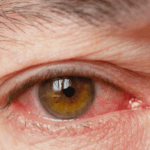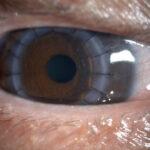Myopia is also known as short sightedness or near sightedness. Myopia occurs when the eyeball is too long or when the cornea is too curved. This causes the eye to focus the image in front of the retina and not on the retina. People with this condition can see objects clearly at near, but distant objects appear blurred. The World Health Organization (WHO) has predicted that by 2050, 50% of the world’s population will be myopic.
Myopia in Children
Generally, myopia occurs in children. These children do not usually complain of blurring of vision. However, there are certain signs that parents can look for in their children such as squeezing their eyes to see clearly, go up close to see an object, rub their eyes and some may also tilt their head to see. Myopia in children is usually genetic in nature. If their parents have myopia, then there is a high chance for their child to develop myopia. Early onset myopia which usually starts before the age of 6 are hereditary. There are certain activities that have been shown to increase myopia in children. These are excessive near work such as reading and increase of screen time with a computer, laptop or handphone and lesser outdoor activities.
Research on Myopia
Strong evidence has shown that exposure to ultraviolet light (sunlight) outdoors at a young age influences the growth of the eyeball. When the eyeball gets exposed to ultraviolet light, there is a release of a neurotransmitter called dopamine which prevents elongation of the eyeball. A study in 2008 done among school children has shown that outdoor activity is a major protective factor against myopia in childhood. Another study done in Taiwan among school children showed that by increasing 18 minutes a day of outdoor activity during recess time showed a reduction of 20% of myopia within a year. This shows that natural sunlight has a positive effect on reducing risk of myopia progression. Excessive near work and increased screen time with gadgets such as laptop, computer and smartphones have also been associated with increase in progression of myopia. The ciliary muscle in the eye tends to work harder when doing excessive near work in unnatural lighting thus causing reduction of dopamine levels in the brain leading to myopia. The American Academy of Pediatrics recommends that children below age of 2 should not be exposed to any of the tablet devices.
In summary, myopia in children is naturally progressive in nature. Children’s eyes tend to grow during childhood and myopia progresses till about the age of 20. Treatment for myopia is a proper prescription of glasses. Myopia in children who are still progressing in their early childhood and not responding to the conservative method will require myopia control treatment. The best age to get your child’s eye to be tested is between ages of 4-6. Your child’s eyes are best checked by a Pediatric Ophthalmologist.






